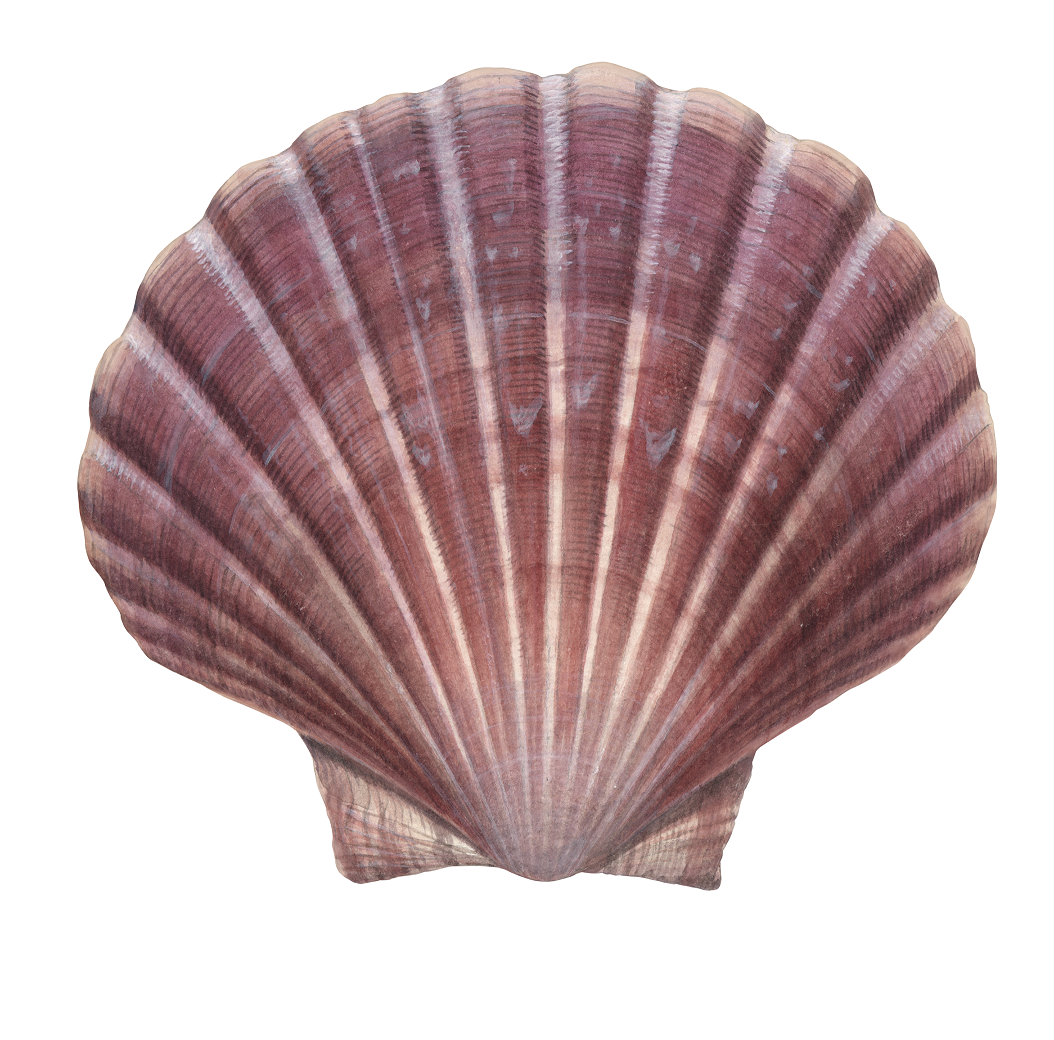Scallop
lupa (Scallop)
In palawa kani, the language of Tasmanian Aborigines, with thanks to the Tasmanian Aboriginal Centre.
Pectan fumatus (Commercial Scallop)

The harvest of Commercial Scallop in Tasmanian waters is regulated through a minimum size limit of 90 mm SL (Shell Length). Animals of this size are approximately 3 years or above in age and have spawned at least twice (Young et al. 1989). The Tasmania Scallop Fishery is managed under a harvest strategy where surveys are undertaken to estimate abundance and decision rules are used to open an area (or areas) to fishing with TACs (Total Allowable Catch) based on the estimated abundance. Scallop dredging is banned in waters less than 20 m as well as in a network of dredge-prohibited areas around the state.
Biomass in the Tasmanian Scallop Fishery (TSF) is historically overfished with recruitment and production levels now affected. In 2013, 2014 and 2015, surveys generally found low scallop densities and limited evidence of successful recent recruitment but did identify two beds (one on the north west coast and the other on the east coast) containing commercial quantities (Semmens et al. 2018). Surveys in 2016 and again in 2017 generally only found very low levels of scallop abundance and limited evidence of successful recruitment, with no area considered to contain commercially viable quantities in either year. This includes the east and north-west coast beds fished in 2013–15, which appeared to have been fished down to a commercially unviable density, with no subsequent recruitment evident.
Fishing mortality is managed with the aim of restricting catches to beds of mature scallops near the end of their lifespan. The combination of the harvest strategy and depleted biomass has led to a history of closures due to low abundance. In recent times, the fishery was closed between 2000–02 and again between 2009 and 2010. Areas with commercial density of scallops towards the end of their lifespan were opened to fishing each year between 2013 and 2015. The fishery has subsequently been closed since 2016.
The depleted stock status of commercial scallops in Tasmanian waters (low density and low levels of recruitment), necessitates careful monitoring of stocks to ensure that significant recovery has occurred prior to consideration of re-opening the TSF.
Highlights from the 2020 assessment can be viewed on the website. A pdf of the 2020 Tasmanian Scallop Fishery Assessment (released Dec 2021) is available here:



